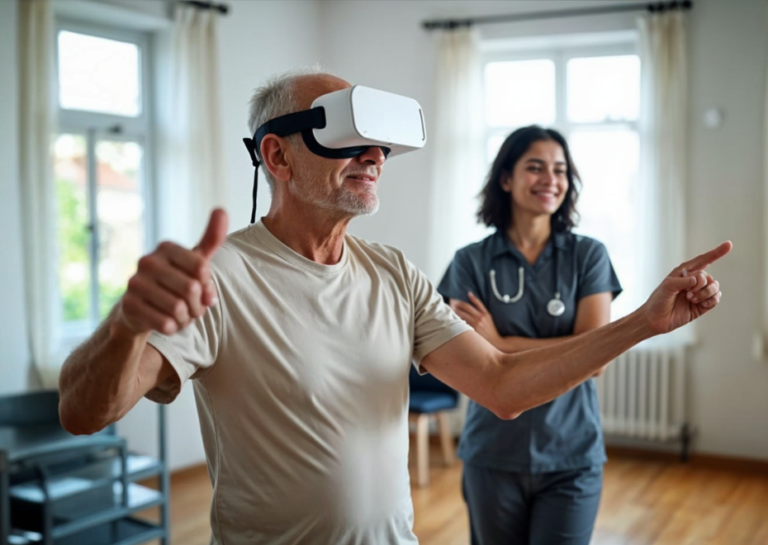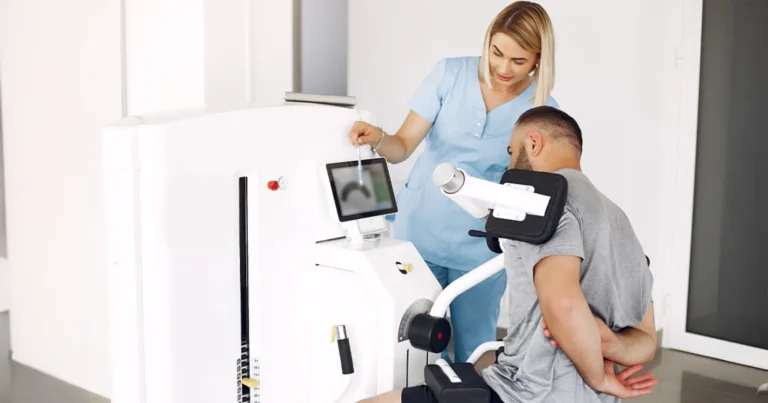Book Appointment Now

SCI: Comparing Complete vs Incomplete Injuries – Prognosis & Rehab
Spinal Cord Injuries (SCI) represent a significant medical challenge, with profound implications for patients, healthcare providers, and caregivers. This article aims to elucidate the critical distinctions between complete and incomplete SCIs, focusing on prognosis and rehabilitation approaches.
1. Defining Complete and Incomplete Spinal Cord Injuries
To establish a foundational understanding, it is crucial to delineate the characteristics of complete and incomplete SCIs:
- Complete SCI: This condition is characterized by a total cessation of sensory and motor function below the injury site, resulting in complete paralysis.
- Incomplete SCI: In these cases, partial functionality persists below the injury level, with varying degrees of sensory or motor preservation.
2. Prognostic Considerations
a. Complete SCI
The prognosis for complete SCI patients presents significant challenges:
- Limited Functional Recovery : The probability of regaining substantial motor or sensory function below the injury level is minimal.
- Assistive Technology Dependence : Patients, particularly those with cervical spine injuries (C1-C8), often require long-term use of mobility aids and respiratory support devices.
- Neurological Stabilization : Following the initial spinal shock phase, neurological deficits typically stabilize, with minimal potential for further recovery.
b. Incomplete SCI
Incomplete SCI patients generally face a more optimistic prognosis:
- Enhanced Recovery Potential : The presence of residual sensory or motor function correlates with improved chances of functional restoration.
- Variability in Outcomes : Recovery trajectories can differ significantly based on factors such as injury type, location, and initial damage extent.
- Syndrome-Specific Prognosis : Various incomplete SCI syndromes (e.g., Anterior Cord, Central Cord, Brown-Sequard) exhibit distinct recovery patterns and potentials.
3. Rehabilitation Approaches
a. Complete SCI Rehabilitation
For complete SCI patients, rehabilitation focuses on maximizing independence through adaptive strategies:
- Compensatory Technique Training: Emphasis is placed on developing alternative methods to perform daily activities.
- Physical Therapy: Interventions aim to maintain unaffected muscle strength and mitigate secondary complications.
- Occupational Therapy: Programs focus on adapting to daily living tasks using specialized equipment.
- Psychosocial Support: Comprehensive rehabilitation includes addressing the mental and emotional challenges associated with adapting to a new lifestyle.
b. Incomplete SCI Rehabilitation
Rehabilitation for incomplete SCI patients is oriented towards functional restoration:
- Intensive Motor Function Recovery: Aggressive physical therapy approaches, including locomotor training, are employed to capitalize on neuroplasticity.
- Neuromuscular Electrical Stimulation: Various electrical stimulation modalities are utilized to activate paralyzed muscles and promote neuromotor recovery.
- Transitional Assistive Devices: Mobility aids are often employed as temporary measures during the recovery process.
- Advanced Therapeutic Modalities: Techniques such as Functional Electrical Stimulation (FES) are implemented to enhance motor recovery in partially innervated muscle groups.
4. Rehabilitation Challenges
Both complete and incomplete SCI patients face unique challenges during the rehabilitation process:
- Long-term Commitment: Sustained engagement in rehabilitation programs is crucial for both injury types, albeit with different focuses.
- Psychosocial Adaptation: Comprehensive rehabilitation must address the psychological impact of SCI, including depression, anxiety, and adjustment difficulties.
- Secondary Health Complications: Management of associated conditions, such as respiratory dysfunction and pressure ulcers, is integral to both rehabilitation paradigms.
5. Emerging Trends in SCI Management
Recent advancements in medical research offer promising avenues for SCI treatment:
- Regenerative Medicine: Stem cell therapies are being explored for their potential to repair spinal cord tissue, though research remains in preliminary stages.
- Robotic Assistive Technologies: Exoskeletal devices show promise in improving mobility and preventing complications associated with prolonged immobility.
- Neuroprosthetic Innovations: Brain-computer interfaces and spinal cord stimulation technologies present potential future modalities for restoring lost function.
Conclusion
The disparities between complete and incomplete spinal cord injuries significantly influence prognosis and rehabilitation strategies. While complete SCIs present more substantial challenges due to total loss of function, incomplete SCIs offer more favorable recovery potential. Both injury types necessitate tailored rehabilitation programs. As medical science and rehabilitation techniques continue to advance, the outlook for individuals with SCI continues to improve. Despite the challenges, with appropriate medical care, rehabilitation, and support, individuals with SCI can achieve meaningful quality of life improvements.



